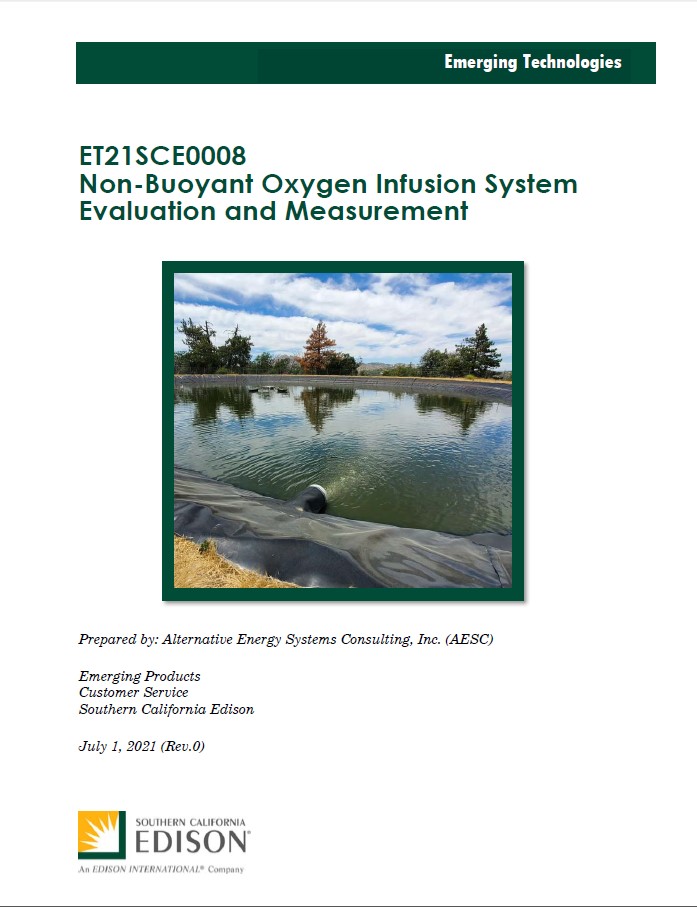Project Info
COMPLETE
 Project Title
Project Title
 Project Title
Project Title
Non-Buoyant Oxygen Infusion System Project & Measurement
Project Number ET21SCE0008 Organization SCE End-use Process Loads Sector Industrial Project Year(s) 2020 - 2022Description
Perform measurement and verification of NanO2 aeration technology to reduce wastewater treatment plant blower load while eliminating sewer system odor and corrosion.
Project Report Document
Loading PDF Preview...
